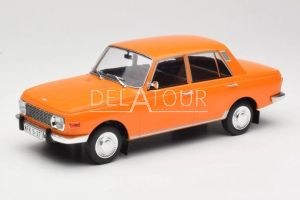Road Cars - Wartburg
Wartburg was a well-known German automobile brand, famous for producing cars primarily in the Eastern Bloc during the Cold War era. The brand was associated with the East German auto industry and became synonymous with practicality and affordability.
Wartburg vehicles were especially notable for their distinctive two-stroke engines, rugged design, and wide use in Eastern Europe and East Germany.
Founded in Wartburg was established in 1955 by the VEB Automobilwerk Eisenach in East Germany. The company was named after the Wartburg Castle in Eisenach, a city with a long automotive history. Before Wartburg’s establishment, the Eisenach plant had been producing vehicles under the Dixi name (a license to build BMW cars) before and during World War II.
After the war, the plant was taken over by the East German government as part of its effort to rebuild the country’s industrial base. Wartburg was originally part of the East German state-owned enterprise, with production focused on providing affordable cars for the general population. The brand was under the supervision of the Socialist Unity Party of Germany (SED) and was tightly integrated into the Eastern Bloc’s economy.
Wartburg’s parent company, VEB Automobilwerk Eisenach, was struggling to modernize its production processes and adapt to the changing global market.
In 1988, Wartburg ceased production of the 353 and began developing a successor, the Wartburg 1.3. In 1991, after the reunification of Germany, Wartburg’s production was shut down, and the brand was discontinued. The Eisenach factory was eventually taken over by BMW, which continued to produce cars under the BMW brand.

 Dutch
Dutch French
French







